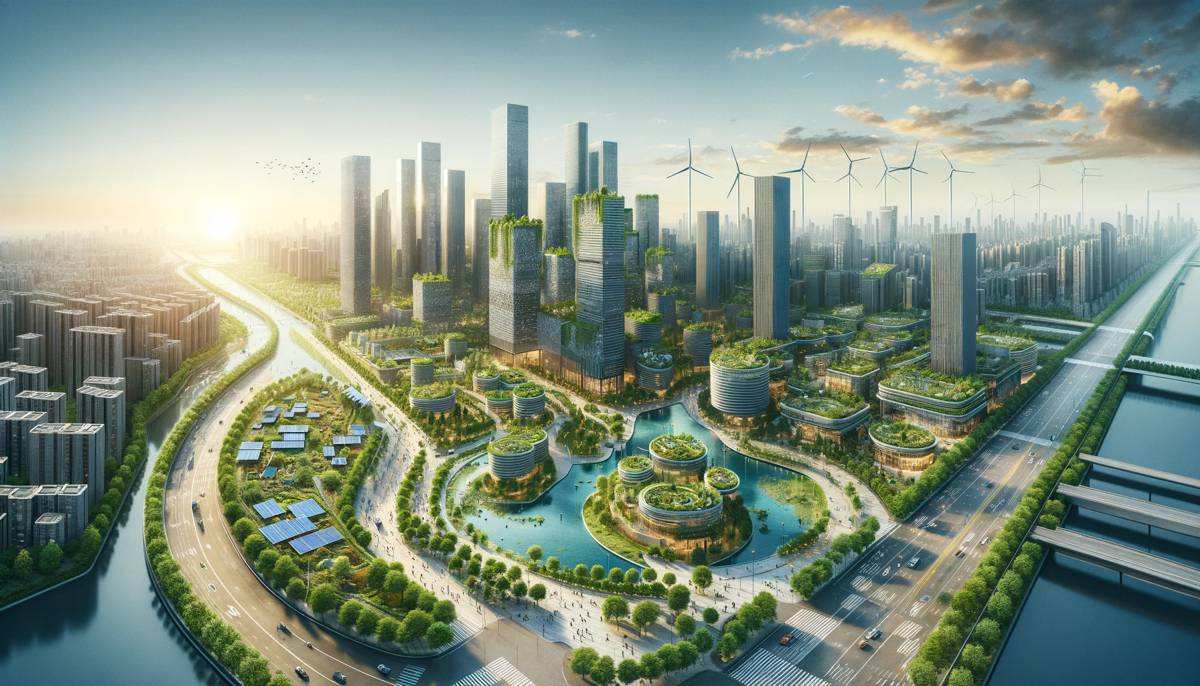Crafting Sustainable Cities through the Eco-Metropolis Model
In the bustling world of urban development, a ground-breaking paradigm is making waves, promising to redefine our cities’ futures.
This new approach, known as the eco-metropolis model, is not just a buzzword; it’s a revolutionary strategy that merges the best of innovation economics and ecological conservation, creating a sustainable blueprint for urban landscapes.
It’s a bold step away from the traditional, linear methods of city expansion, pushing us towards a future where technology, economy, and ecology dance in harmony.
The Genesis of a Green Revolution
At the heart of this innovative wave is a compelling study published in Volume 19 of Environmental Science and Ecotechnology. Spearheaded by researchers from the Harbin Institute of Technology Shenzhen, this research presents the eco-metropolis model as a beacon of hope for urban areas worldwide. Far from a mere academic exercise, this model is a call to arms, urging us to rethink how we conceive urban growth and sustainability.
Gone are the days when expanding city borders was the only indicator of progress. The eco-metropolis model introduces us to a world where innovative agglomeration—the clustering of industries, services, and technologies—drives economic growth, all while preserving the delicate balance of our natural ecosystems. This isn’t just about adding green spaces or recycling more; it’s a fundamental shift in how we view the relationship between cities and the environment.
The Eco-Metropolis Model: A Closer Look
What sets the eco-metropolis model apart is its holistic approach to urban development. It doesn’t just challenge the status quo; it flips it on its head. Traditional urban planning often pits economic development against ecological preservation. In contrast, the eco-metropolis model sees the two as inseparable companions.
- Innovation Meets Conservation: At its core, this model advocates for a symbiotic relationship between urban growth and ecological health. By leveraging green technologies, cities can foster economic innovation without sacrificing their environmental responsibilities.
- A Framework for Sustainability: The study outlines a detailed strategy for integrating ecological conservation efforts with urban development plans. It’s a roadmap for cities aiming to become not only more liveable but truly vibrant and resilient.
- Economic Growth, Reimagined: Far from hindering economic progress, the eco-metropolis model suggests that sustainable practices can fuel a new kind of economic vitality. By fostering industries and services that prioritize sustainability, cities can unlock new avenues for innovation and prosperity.
Dr. H. Li, leading the research, encapsulates the essence of this model: “The eco-metropolis model redefines urban development by prioritizing ecological conservation alongside innovation and economic growth. It represents a critical shift towards creating sustainable, liveable cities for future generations.”
Transforming Theory into Practice
While the eco-metropolis model offers a promising vision for the future, the true challenge lies in its implementation.
This requires a concerted effort from all stakeholders—governments, businesses, communities, and individuals alike. Each has a role to play in weaving sustainability into the fabric of urban development.
- Public-Private Partnerships: Building sustainable cities is a collective endeavor. It demands innovative financing models and partnerships between the public and private sectors, leveraging their strengths to support conservation and green technology initiatives.
- Community Engagement: True sustainability comes from the ground up. Engaging local communities in conservation efforts and green technology projects not only fosters a sense of ownership but also ensures that development meets the real needs of residents.
- Policy Innovation: For the eco-metropolis model to flourish, policymakers must be willing to experiment and innovate. This includes crafting regulations that encourage sustainable practices and offer incentives for green technology adoption.
Charting a Course for the Future
As we stand at the crossroads of urban development, the eco-metropolis model offers a path forward that is both visionary and viable. It challenges us to reimagine what our cities can be: not just engines of economic growth, but bastions of ecological resilience and innovation.
In embracing this model, we have the opportunity to craft urban landscapes that are not only sustainable but truly thrive. It’s a journey that will require creativity, collaboration, and courage, but the rewards—a world where cities and nature exist in harmony—are well worth the effort.
The eco-metropolis model isn’t just a blueprint for the cities of tomorrow; it’s a manifesto for a more sustainable, vibrant world. As we move forward, let us take this challenge to heart, building cities that will stand as testaments to our commitment to a better, greener future.















